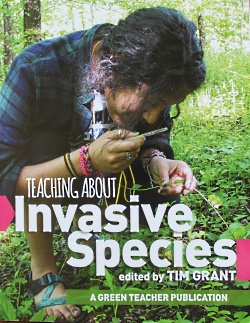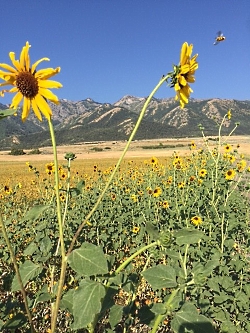
Basically, we are referring to any species that is not native to that ecosystem, it can survive and reproduce there, and by its introduction can cause harm to the environment, the economy, wildlife, and human health. And this doesn’t mean just plants. There are also invasive animals and even microorganisms that can disrupt the balance that maintains natural ecosystems.
They usually have some means of dominance over native species, such as superior reproduction or faster growth success. They may also have unique forms of defense against native predators. Being newly introduced to an area, they may not even have any competition from similar species, or natural predators may not exist in their new area at all. Their advantages can outcompete native species at alarming rates and result in a reduction, or elimination, of biodiversity in huge areas. And research has proven that having a diversity of native life forms improves the health of ecosystems.
Organizations dealing with agriculture, forestry, fisheries, wildlife and waterways estimate that the annual costs to try to control invasive species in our country exceeds $120 billion dollars. And, whether you are a supporter of the Endangered Species Act or not, a quote from the U.S. Fish & Wildlife Service states “More than 400 of the over 1,300 species currently protected under the Endangered Species Act,…..are considered to be at risk at least partly due to displacement by, competition with, and predation by invasive species.”
In Utah, there are 596 invasive plant species, 28 invasive insects, and a few mammals too. I’ll simply mention a few and why they are so problematic: In the water we are plagued with Quagga and Zebra Mussels, Carp , and plants like Purple Loosestrife. One adult Zebra Mussel can produce one million larvae that mature in one year.
Africanized Honeybees have been sneaking into our State, and they can be very aggressive.
Some of the more common invasive plants include: Russian Olive,
Field bindweed, Dyer’s Woad, Russian and Canada thistle, Stinging Nettle, Tamarisk, …..even Kentucky Bluegrass is on the list. The yellow Dyer’s Woad plant that covers many of our hillside grazing lands, is prolific and may produce 10,000 seeds per plant
The European Starling and English House Sparrow are two birds that don’t belong here, but have been extremely successful by inhabiting all 50 States and occupy nesting sites and deplete food sources of our native American songbirds.
Mammals include the Red Fox, Muskrat, White-tailed Deer (which might excite some hunters), and the adorable Raccoon which may be one of the best examples of the problems invasive species can cause. Raccoons can damage homes, fruit trees, and gardens, kill chickens, cats, migratory birds, pheasants, ducks, quail and grouse. They can also spread disease to other mammals as they eat out of garbage cans, carry fleas, ticks, lice, distemper, mange, and blood tests have shown that 80% of them have been exposed to rabies as indicated by the presence of a rabies titer.
For more information, search online for the topic of interest, plus Utah State University. Or get the book “Teaching About Invasive Species” edited by Tim Grant.
This is Ron Hellstern, and I am Wild About Utah.
Credits:
Images: Courtesy & Copyright Tim Grant, GreenTeacher.com
Text: Ron Hellstern, Cache Valley Wildlife Association
Additional Reading
Ron Hellstern’s Wild About Utah Posts
Leavitt, Shauna, The Invasive Phragmites, https://wildaboututah.org/invasive-phragmites/
Don’t ditch a fish!, Utah Division of Wildlife Resources, https://wildlife.utah.gov/dont-ditch.html
Don’t Let it Loose, Utah Division of Wildlife Resources, https://www.dontletitloose.com/rehoming-a-pet/utah/
Grant, Tim, Green Teacher, October 31, 2014, https://www.amazon.com/Teaching-about-Invasive-Species-Grant/dp/0993775330



